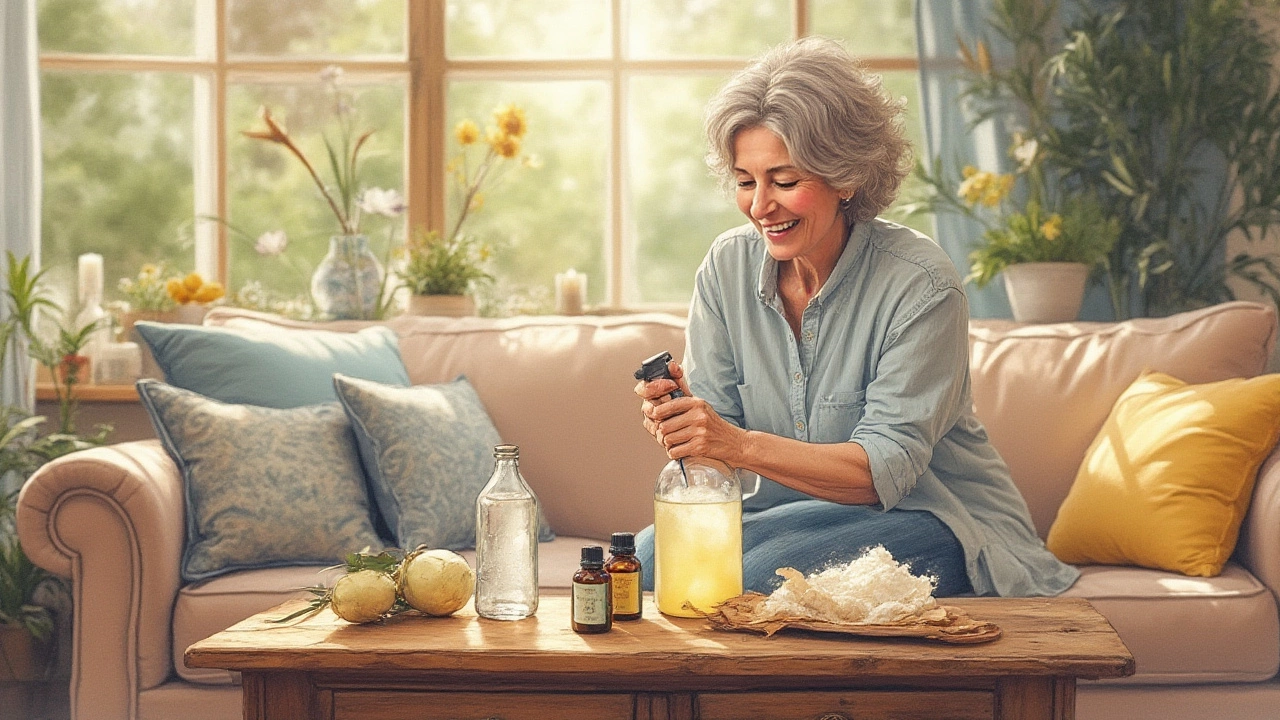DIY Upholstery Cleaner: Make Your Own Fresh Couch Cleaner
Got a stained sofa or a smelly armchair? You don’t need pricey sprays or a professional call. With a few kitchen items you can whip up a cleaner that lifts dirt, fights odors, and won’t damage the fabric. This guide walks you through the basics, the do‑and‑don’ts, and a step‑by‑step routine you can start right now.
What You Need
Grab a spray bottle, a clean white cloth, and these ingredients:
- 1 cup warm water
- ¼ cup white vinegar (a natural deodoriser)
- 2 tablespoons mild dish soap (no bleach or enzymes)
- Optional: a pinch of baking soda for tough grease
All of these are safe for most fabrics, but always check the care label first. If the tag says “dry‑clean only,” keep the liquid to a minimum and test on a hidden spot.
Step‑by‑Step Cleaning Guide
1. Spot test. Spray a tiny amount on the back of a cushion or under the arm. Wait 30 seconds. If the colour stays the same and the fabric doesn’t feel stiff, you’re good to go.
2. Shake and spray. Give the bottle a good shake, then mist the stained area lightly. You want the fabric damp, not soaked – excess water can seep into padding and cause mould.
3. Gentle rub. Use a soft white cloth or a clean sponge, blot the spot in circles. Avoid rubbing hard; friction can push dirt deeper into the weave.
4. Let it work. Allow the solution to sit for 5‑10 minutes. The vinegar will break down oils while the soap lifts particles.
5. Rinse with clean water. Dampen a second cloth with plain water and dab the area to remove soap residue. Too much water? Use a dry towel to absorb excess.
6. Dry quickly. Open windows, turn on a fan, or use a hair dryer on a cool setting. The faster it dries, the less chance of a musty smell.
For stubborn greases, sprinkle a little baking soda on the damp spot before spraying. The fizz helps lift the grime without harsh chemicals.
Now that you have the basics, remember a few common mistakes that can ruin your upholstery:
- Using too much liquid – it can seep into the foam and cause odours.
- Applying bleach or strong solvents – they strip colour and weaken fibres.
- Skipping the spot test – a small patch can reveal how the fabric reacts.
- Rubbing with a rough brush – it can snag the weave and leave permanent marks.
If your couch looks worse after cleaning, it’s often because the cleaner left a residue or the fabric wasn’t fully dried. Follow the rinse‑and‑dry steps above, and you’ll avoid that dreaded “dirtier‑than‑before” look.
Got an older, delicate piece? Start with the lowest concentration of soap and vinegar, and consider using a foaming hand‑sprayer to apply an even, light mist. For velvet or silk, a plain water‑only wipe followed by a dry cloth works better than any soap.
Finally, keep a small bottle of your DIY cleaner under the couch for quick touch‑ups. Regular light cleaning prevents deep stains, so you’ll spend less time fighting big messes later.
With these simple steps, you can keep your upholstery looking fresh, smell great, and last longer – all without breaking the bank or harming the environment.

Best DIY Upholstery Cleaner: Proven Recipes and Tips for Spotless Results
Dig into the top homemade upholstery cleaners, pro cleaning hacks, and the real science behind stain removal. DIY tricks for safe, fresh, and spotless furniture.
Read More